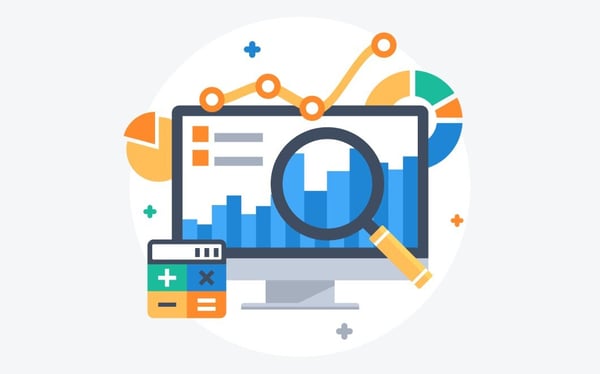4 Must-have Data Points for Dispatch-Billing Alignment and Maximum Reimbursement
EMS Operations, Documentation & Billing
It's all about the numbers Welcome to 2018, a year of numbers that will influence operations, billing, documentation and compliance
Was this information valuable?

It's all about the numbers
Welcome to 2018, a year of numbers that will influence operations, billing, documentation and compliance. Numbers like 35, the percentage increase in deaths from opiates in the past two years; 35 percent is a number that will continue to effect operations and challenge billing. There are good numbers like 14, the number of states where Anthem Blue Cross will reimburse “treatment without transport.” A scary number is 12. For the first time in a while, the rate of uninsured grew in the past year to over 12 percent. Will more people postpone service until it’s an emergency? How are we going to bill and collect? In November, CMS reminded us 226 is still a worry. That’s the amount of money ($226 million) Medicare says was overpaid to ALS services prompting audits and review nationwide – a hit to the bottom line and a battle cry for documentation and billing improvements. Then there’s LUCKY 7! The OIG Compliance Guidance has 7 elements needed to comprise a good ambulance compliance program. Numbers drive much of what we do daily, even low numbers like 2.
Is a Call an Emergency or Non-Emergency? Who Insures the Patient?
Two is a number that creates lots of angst in the beginning of a new year. Every single transport will be one of two things – it will be covered or non-covered. If it’s a covered service, it’s likely to be one of two insurers. Billers face the challenge of two. Which payer is it – a question for both emergency and non-emergency transports. Is the call an emergency or a non-emergency? If it’s a non-emergency, do you have a contract to render that service or is it a service covered by Medicare?
I visit many billing operations and see the effect of the number 2. Making the right decision about the number sways almost every step of the dispatch and billing process. Let’s look at dispatch issues. Call intake personnel ask questions about the patient’s condition and what type of service is needed. For non-emergencies, it’s also important to know the payer. Now there’s the rub – facility callers either do not have payer information or they may have the wrong information. It’s helpful if dispatch (or a transport coordinator) can ascertain who the correct payer is – this information helps determine what forms may be needed, if a prior authorization is required, or, is the provider the right company to do the job (or is there another network provider). It’s essential that call takers (or coordinators) have access to information about the payer.
The number 2 comes into play as there are usually one of two payers to choose from – is this a Medicare beneficiary or Medicare Advantage enrollee?
After the transport, the trip report goes to billing. Whether emergency or non-emergency, billing needs to verify the payer, so the claim is properly submitted. Again, the number 2 comes into play as there are usually one of two payers to choose from – is this a Medicare beneficiary or Medicare Advantage enrollee? In the beginning of the year, the question of 2 becomes more difficult to answer. At this time of year, Medicare beneficiaries may jump between traditional fee-for-service Medicare to Medicare Advantage. Just this past week, CMS announced that people who were impacted by hurricanes in Puerto Rico or the Virgin Islands as well as people effected by the California wildfires haveadditional time to sign up for insurance on the federal exchanges as well as special extension of the Medicare enrollment period. Once again, billers will wrestle with the question of who insures the patient?
Verify an EMS Transport Claim Prior to Processing to Protect Cash Flow
Getting the claim to the correct payer protects cash flow. It saves the time needed to work on denials. It assures less effort is needed for accounts receivable follow-up. (There is not an ambulance organization that I’ve visited that ever has enough time to follow-up on unpaid/unprocessed claims). The answer is to verify the daylights out of that claim prior to processing!
A little extra legwork at the start of the process will eliminate an enormous amount of time at the back-end of the process.
For some providers, pre-verifying is a multi-stepped process. You rely on a combination of paper and electronic means to do the job. If you are lucky, your crew was able to obtain a face sheet from the hospital. The face sheet may contain helpful demographic information. But that’s the start of the journey. Once you have quality demographic info, the next step is usually electronic. For many billers, that means checking multiple websites to find what you need. It’s time consuming and sometimes frustrating.
Because pre-verifying can be timely, there is a tendency among billers to go with the first payer they find. Information may be readily available about the patient’s status as a Medicare beneficiary, but billers need to address the question of 2 again. Is Medicare truly responsible to pay for this trip, or, is another third-party payer liable for payment (e.g., was the patient in a car accident, or hurt by slipping at a neighbor’s house, or a fall at the mall, etc.). Again, it comes down to a question of 2 – is it the first payer (Medicare) or the second payer (the neighbor’s homeowner’s insurance)?
Billers need to employ all tools at their disposal to determine who the correct payer should be. A little extra legwork at the start of the process will eliminate an enormous amount of time at the back-end of the process. There is nothing more time-consuming than sitting on hold waiting to speak to a payer about an unprocessed or denied claim! Whenever possible, put the extra effort into making the best decisions at the beginning of claims preparation. Save yourself from undue aggravation chasing unpaid claims. The reward will be more clean claims paid in a timely manner. That’s a win for the whole organization!
What About the Other Numbers Driving EMS in 2018?
Because the numbers of EMS are drivers of what we do, in coming articles, I will address the numbers driving the topics of concern to every provider and billing agency. We will bring you practical advice or action steps you can take to better cope with the “numbers.” Let us know if EMS Financial Services can help!
Related Posts
Podcast: 4 Ways ePCR Software Can Relieve EMS’ Biggest Headaches
Black Book Research Ranks ZOLL Billing the #1 Insurance Discovery Solution
ZOLL Pulse Blog
Subscribe to our blog and receive quality content that makes your job as an EMS & fire, hospital, or AR professional easier.
ZOLL Pulse Blog
Subscribe to our blog and receive quality content that makes your job as an EMS, fire, hospital, or AR professional easier.





